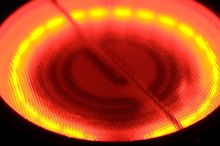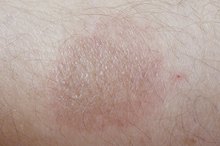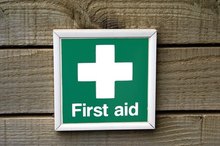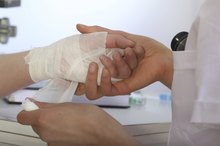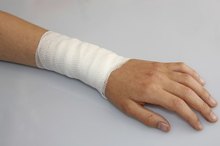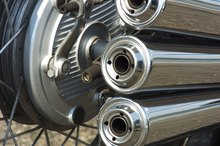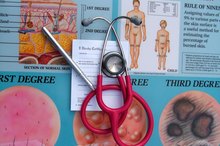Home Remedies of a Blister Resulting From a Burn
Skin that has been burned becomes red, and blisters may form in the case of a second- or third-degree burn, says the Mayo Clinic 2. Third-degree burns are the most severe burns and may be accompanied by black or white, charred areas of the skin. If you are suffering from third-degree burns, see a doctor immediately. Second-degree burns can be treated with at-home care.
Cool Water
The Mayo Clinic recommends running cool water over the burned, blistered area to help draw out the heat from the skin and decrease the pain of the burn 2. Run a thin, cool stream of water out of the faucet and place the burned area beneath it for 15 minutes. If running water is not available, apply a cold compress or submerge the burn completely in running water, says the Mayo Clinic 2. Do not put ice on the burn, as this can cause further damage to the burned area.
Apply a Bandage
How to Treat a Burn Bubble
Learn More
Place a bandage over the burn to help protect it, prevent the area from becoming infected. Prevent bacteria from entering the body. Use a brand-new, sterile piece of gauze that is thin and smooth, not fluffy and cottony. Gauze that sheds or is too fluffy can get stuck in the wound, causing infection. The Mayo Clinic recommends applying gauze to the burn to help reduce the pain of blistered, burned skin and to help keep blisters protected from air and bacteria 2.
- Place a bandage over the burn to help protect it, prevent the area from becoming infected.
Cut Away the Blister
Do not break a blister, recommends William Sears, M.D., associate clinical professor of pediatrics at the University of California at Irvine's School of Medicine. A blister helps cool and protect burned, exposed areas and form to heal the blister. If a blister is stretched or moved often, it may break. If a blister breaks, cut away the excess skin, Sears suggests. Use a pair of sterilized medical scissors to cut away carefully the skin from the blister, which will keep bacteria from growing inside the folds of skin.
- Do not break a blister, recommends William Sears, M.D., associate clinical professor of pediatrics at the University of California at Irvine's School of Medicine.
- Use a pair of sterilized medical scissors to cut away carefully the skin from the blister, which will keep bacteria from growing inside the folds of skin.
Related Articles
References
Resources
Writer Bio
Megan Smith has been a freelance writer and editor since 2006. She writes about health, fitness, travel, beauty and grooming topics for various print and Internet publications. Smith earned a Bachelor of Fine Arts in writing from New York University.

